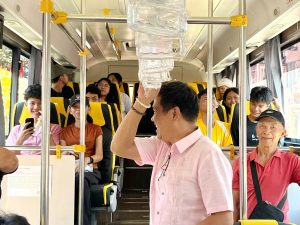
(BORONGAN CITY INFORMATION OFFICE)
TACLOBAN CITY – The city government of Borongan has launched the “Libreng Sakay” program, fulfilling Mayor Jose Ivan Dayan Agda’s promise to make transportation more accessible, especially for those who cannot afford regular fares.
Launched on Monday (May 20), the Libreng Sakay program is available for senior high school and college students, persons with disabilities (PWDs), senior citizens, and government and barangay health workers.
An ordinance, the “Borongan City Libre Sakay Ordinance of 2024,” was enacted on May 15 of this year by the Sangguniang Panlungsod to support the program.
Beneficiaries of the free ride will receive an e-card from the city government. The application for this e-card was developed by students of the Eastern Samar State University College of Information Technology with assistance from the Department of Science and Technology (DOST).
The e-card is for exclusive use by the registered beneficiary and cannot be transferred to others. Violators will face fines ranging from P500 to P5,000 or imprisonment, at the court’s discretion, and will lose their privileges.
Students who drop out of school or transfer to institutions outside Borongan City, residents who transfer their voter registration elsewhere, and health workers not employed by the government will be disqualified from the program.
“We, the LGU of Borongan, are truly dedicated to providing convenient transportation for our beneficiaries, offering it to them for free,” Mayor Agda said, explaining that the initiative aims to help Borongan residents by providing free transportation without the burden of costly fees.
“Through the efforts of stakeholders like ESSU and DOST, we can offer free rides and help bridge the gap between different communities, promoting a more inclusive and cohesive city today and in the future,” the city mayor added.
The free rides will operate from Barangay Camada to Brgy. Bugas from 5 am to 8 pm, Monday to Friday.
The city government explains that the limited number of sectors benefiting from the program ensures minimal impact on the transportation industry, such as tricycle drivers who earn modest incomes.
(ROEL T. AMAZONA)



